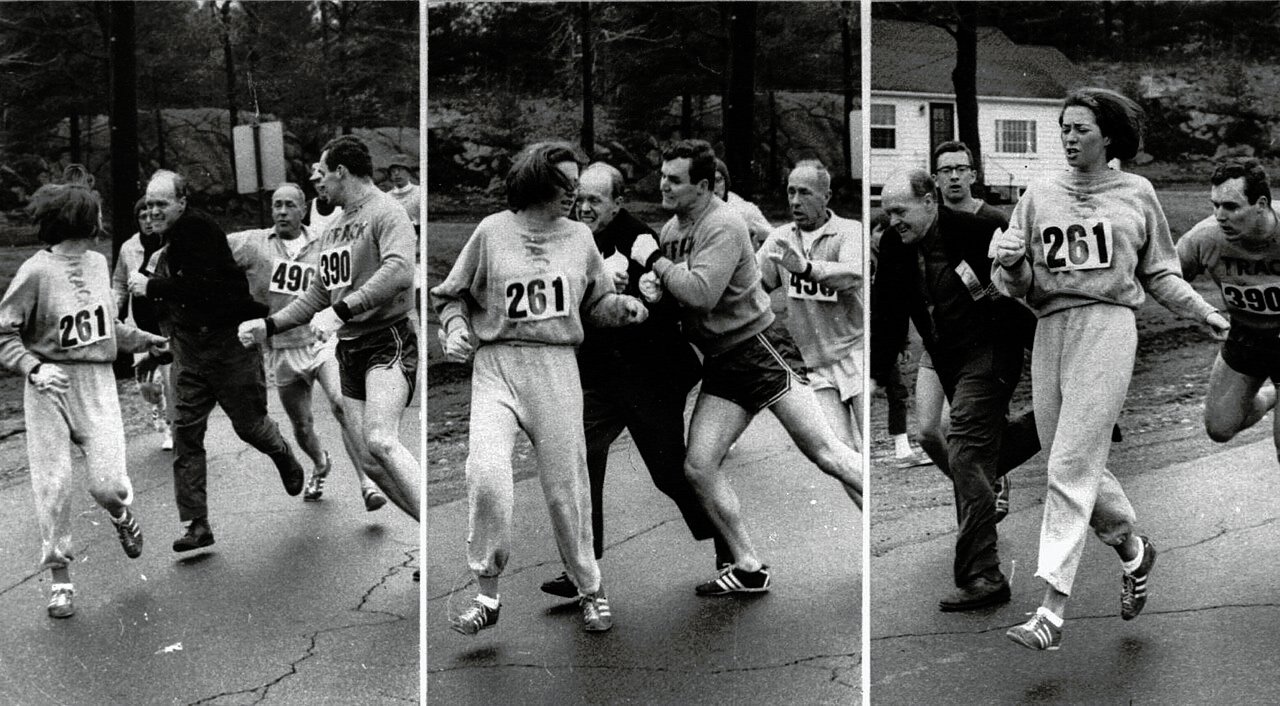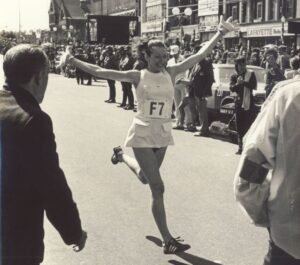
by Coach Adolfo Salgueiro | Sep 24, 2024 | Article, List, Reflection
By Coach Adolfo Salgueiro
As the racing season for big marathon races picks up, many runners have unique plans in sight. Many runners make it extra special, building an adventure around their race. We may drive or board trains and airplanes to make it either a weekend or a longer vacation.
There is no sense crossing the ocean to go to Berlin or Sydney just to race and come back home. Or you can always make it a nice long weekend if you just need to hit the road for a few hours. The key to a successful out-of-town race is to understand why you are there in the first place: to run a marathon. The fact that it is in Chicago or New York is what makes it a getaway. Most likely, there would have been no trip if you had not been running the marathon. Remember, the running portion of your trip is the priority. Don\’t let the allure of tourist activities distract you from your main goal.

Sure, you can visit the Eiffel Tower… after the race (Photo: Rafaelf1, Pexels)
This is an important concept to grasp. I know way too many stories of runners sightseeing too hard, so they reach the starting line tired. On more than one occasion, I\’ve met runners (usually younger) who were hungover because they couldn\’t resist partying while away from home. A friend shared a story about his family resenting him because they had to wait to visit the Eiffel Tower until after the marathon, which added unnecessary stress to his pre-race routine.
Exploring the world\’s great cities, celebrating for a few days, sipping margaritas at the beach, and discovering the less traveled paths in lesser-known parts of the world is always a bonus for our efforts. But traveling to a race, especially your goal race, doesn\’t come without its challenges. It requires additional planning. If you don\’t prepare ahead, the chances of fixing a hiccup on the fly diminish considerably.
So, if you worked hard on your marathon training and are setting out on a running/travel adventure, these tips will hopefully help you get to the starting line mentally and physically sharp:
1. Do not check your running gear: If traveling by plane, whatever you are wearing on race day, goes in your carry-on. The last thing you need is lost luggage derailing your race plans. You don\’t want to run in brand-new shoes you purchased at the expo or with borrowed shorts.
2. Run first, tourist later: The running portion of your trip is the priority. Don\’t arrive too much in advance before the race. Save the touristy plans for after. You want to get to the starting line focused, well rested, mentally and physically ready. Afterward, you may walk all you want or enjoy as much alcohol and crappy food as you can tolerate.
3. Know where your pre-race meals are coming from: Never take your food intake for granted. Make sure you know that what you need to eat is available nearby. It happened to me once. After identifying the restaurant I wanted in Philadelphia, I went on pre-race night only to find I needed a reservation. If you are staying with relatives, make sure you let them know exactly what you must eat and at what time.
SUBSCRIBE TO THE FOULTIPS.RUN NEWSLETTER BY CLICKING HERE
4. Know how to get to the starting line: Do not improvise. Plan for the worst-case scenario. If you are taking a cab, have the phone number and confirm they provide the service at the time you need it. Have a B plan in case there are no Ubers available. If you are taking public transportation, purchase tickets in advance. If a relative is driving you, be aware of road closures and alternative routes.

All the gear you will need during the race, goes inside the cabin with you (Photo: Guiirossi, Pexels)
5. Have family and companions understand why you are there: If you are traveling with family or friends, it is imperative they understand that the first few days are all about you and your race. Runners are the protagonists. Everything else can wait. Remind them they wouldn\’t be in Amsterdam, or Buenos Aires or DC if it weren\’t for the marathon.
6. Adjust for time changes: Never underestimate jet lag and time zone differences, as they can screw your sleep and derail your race. Find out in advance how to adjust to the time zone in which you will be competing. There are plenty of online resources for this. You don\’t want to be falling asleep at Mile 10 because it feels like 4AM for you.
7. Pack for any weather: Remember you are not home, so you can\’t just go back to your closet to pick up something else. Pack for any possible weather change, and don\’t rely 100% on your weather app. It is always better to bring back something unused than to need that pair of gloves you left at home.
8. Don\’t do anything you wouldn\’t do at home: Pre-race is not the time to be adventurous. Trying new, exotic foods, white water rafting, Segway tours, or running a beautiful trail when all you know is the asphalt is for after the race. These could be recipes to guarantee a bad race. Hold the fun stuff for after the finish line.
Please like this post, share any other recommendations from your previous experiences, and let\’s build a community of informed and prepared runners.

by Coach Adolfo Salgueiro | Aug 27, 2024 | Article, Coaching, Reflection, Science
By Coach Adolfo Salgueiro
Let’s start by stating something basic that even veteran runners tend to forget: The Marathon is a 99% aerobic event. Yes, even Ekiud Kipchoge and the East Africans who run around him run the marathon as an aerobic endeavor.
Having a solid aerobic base to sustain continuous action for 26.2 miles is one of the keys to a successful marathon. And when I state “successful,” I don’t mean setting a PR; I mean finish. Sure, we all know someone who has finished a marathon without training, but those are outliers, and most of those go through a sufferfest during their race. So,don’tt take any cues from them.

Race at 100% but only train at 80% (Photo Pexels)
Your aerobic base is the cornerstone of your long-distance running journey. Think of it as a pyramid’s broad, solid foundation, supporting the peak over which speed and performance are built.
Developing an aerobic base requires time, work, and patience. It covers hundreds, if not thousands, of miles and comes from years of engaging in activities that keep your heart rate elevated for long periods. Many runners achieve this base through previous activities in sports like soccer or swimming, while others have honed it just by running over the years. A strong aerobic base is essential to improving your speed and excelling in endurance events.
Running beyond the correct rate of perceived effort, performing all your long runs at race pace every single week or running your repetitions and intervals with all your might are not conducive to developing a solid aerobic base. It is counterproductive and not only won’t make you faster in the long run, it may lead to injury.
The aerobic base can be developed by:
• Running consistently
• Learning where your conversational pace lies
• Accepting you must go slow to run fast
• Trusting the process
As your aerobic base develops, you will:
• Become a more efficient runner
• Become a faster runner
• Improve the rate of lactate removal
• Improve muscle and energy output
Train at 80%, Race at 100%

Running every rep at max effort is not conducive to sustainable running (Photo: Caique Araujo, Pexels)
I firmly believe you shouldn’t go all out on your training runs, drills, and reps. Since your body needs to recover to realize the adaptations of your efforts and still keep the training moving forward, ending a rep or a training session on the verge of collapse is not the best practice. When you do so, you put your body through extreme stress, which will require a longer period of recovery. It would be best if you ended the rep knowing you could have gone even faster. Finish the workout knowing you could have gone an extra rep or two is a better strategy.
When you train for a race, that effort is in the future; you are working towards that goal. This means you train at today’s fitness level, not at the level you expect to be at race time. Focus on the prize.
Once race day is here, after a tapering period during which you are recovered and ready to go, you give it your all on race day. You are not saving anything for tomorrow. You invested your mind, body, and resources through a test of fitness and will. Then, you cross the finish line at the edge of your endurance limit.
In Conclusion
Running slow is counterintuitive. It feels weird when you know you could be running faster. It takes practice to go slow. Anyone can run itself to the ground by sprinting every day and racing their training runs. There is no merit in that. What takes guts is to accept that you must be patient, play the long game, and be willing to defer your gratification so you can enjoy your running for a very long time.
Sure, these are fundamental concepts for most runners, but we all need to be reminded of the obvious at one point or another to remain grounded during a difficult training cycle.
Feel free to like this post or leave a comment in the box below.

by Coach Adolfo Salgueiro | Jun 18, 2024 | Book Review, Opinion
Written by Kathrine Switzer
Reviewed by Coach Adolfo Salgueiro
I’ve wanted to read Marathon Woman for quite a while. For years. But because I thought I knew the Kathrine Switzer Boston Marathon story, other running books ended up jumping the line. Now that I tackle it, and finished it, I am glad I did. There is so much more to the generic story most of us think we know. There is so much more about this pioneering woman that every runner with the most basic interest in the history of our sport, especially women, should know.
The book was originally published in April 2007, for the 40th anniversary of her historic 1967 Boston Marathon. A new and updated version was released for the 50th anniversary.
Runners with basic knowledge in the history of running may know who Kathrine Switzer is. Yes, she was the first woman that while properly registered, ran the Boston Marathon. Yes, she is the protagonist of that set of three photos where the marathon official, Jock Semple, attacks her while trying to rip her bib. And yes, she is one of the pioneers of women’s long-distance running.

The set of photos by Harry A. Trask that propelled women’s running into a legitimate sport
But that is just part of the story. Only part of her legacy. She did so much more to promote that women were more than able to run beyond 800 meters, that they could run as far as they wished, including marathons at high speed without their uterus falling out. She was the catalyst of the women’s marathon becoming an Olympic event starting in 1984. And she did it not as a banner of feminism but because she believed women could do it, and se set out to prove it through actions. Not just words.
I am not going to go deep into the history of women’s running in the last 50 years. That is what the book is there for. But have this in mind: if you are a woman runner reading this post, next time you are in a race and see that more than half of the field being female, make sure you thank Kathrine Switzer.
I am sure that if Switzer did no endured and persevered through what she did, women would still be running marathons today. Another pioneer would have risen to the occasion. But Switzer was the one who did it, and as such, she should be recognized as a trailblazer in our sport. One of the most influential figures in history.

Switzer was more than a curiosity. She won the NYC Marathon, 2nd set up at 2:52 PR in Boston.
In her first-person account the author is very candid, vulnerable, and open about her life, both on and off the asphalt. She starts as a girl who just wants to run but finds no outlet, through her fateful first marathon, her win in the NYC Marathon, her 2:51 PR, the AVON race series for women and finally establishing the female marathon as an Olympic event.
Switzer is funny, intimate, candid and holds no punches while discussing her personal life experiences, especially when it comes to the men she has shared her life with. Her romantic relationships were not the best, yet she was able to persevere and come victorious on the other side, without surrendering as a victim and still making her life’s goal a reality.
You don’t have to be a runner, or a woman for that matter, to enjoy and learn something from Marathon Woman. I highly recommend it. It is worth two particularly important resources: your time and your money.
Have you read Marathon Woman? Let me know your thoughts in the comment box below.

by Coach Adolfo Salgueiro | Nov 14, 2023 | Article, Coaching, Reflection
By Coach Adolfo Salgueiro
A year ago, Grace P. had never run before. I am sure she tried to catch a bus or get refuge from the rain at some point, but never what we picture when we think of a runner.
She is friends with my wife and on a fateful October day of last year, we were invited to a small gathering at her house. I wasn’t too keen on spending a Saturday afternoon with people I don’t know but there are certain sacrifices a husband must make. Grace’s husband was wearing Brooks shoes, so to make small chitchat I asked if he was a runner. “I only run when Grace wants to hit me”, he joked back.

Still looking strong and happy at mile 18 of the Marine Corps Marathon.
Then my wife stated that I was a running coach and Grace jumped in saying something along the lines of: “I’ve always wanted to run, but I can’t get very far without getting tired. I see my neighbor running all the time, but I can’t run like her”. So, I told her I was the head coach for the City of Tamarac Run Club. “If you are at X park at X time on X day, I will get you running”. And she showed up. And kept on showing up. Last October 29th, she became a marathoner.
Three or 4 weeks into the training, on a cold and rainy night, everyone bowed out of the run through our chat. Except Grace. So, I showed up. She was scheduled to run three miles and at two, in the midst of a downpour, I told her it was OK to cut it short. With a huge smile, she told me she was completing her workout. And she did.
That was the specific moment when I realized that she caught the running bug and that she had the talent and drive necessary to achieve great things in this sport. Her training improved so fast that in less than two months of running, she skipped the 5K and went straight to a 10K race, in which she ran 1:00:13. A month later she ran her first 10 miler and another month later her first half marathon in 2:18. Within another month she set two more PRs in the distance, finishing the season with 2:05. That is a minute per mile faster than six weeks earlier. Now she wanted a marathon.
The story escalated quickly from there. As her coach, I wanted to make sure she recovered properly. That she took the necessary time off, that she began a strengthening program, that she learned about nutrition, hydration, recovery, etc. She even took to learn about the story of women in running by reading Marathon Woman, by Kathrine Switzer, who she learned to admire.

While in DC, Grace had the chance to meet and mingle with the one and only Kathrine Switzer
Then, as the hottest month of July in recorded history dawned in South Florida, Grace and her training partner Luis D. started their marathon preparation. It was brutal. More than once they had to take to the streets at 5 AM under 85-degree temperature and 100% humidity. Yet, they persevered. They kept going until one day… Voila!!! It all kicked in and new distances beyond 13.1 became not only possible but she thrived on them. I can recall her finishing her first 15-miler hooting and jumping with a big smile. Yes, I know. Totally crazy!
Sure, there were setbacks. And those were important, too. There was one time she hit the wall and had to finish walking. In the midst of her disappointment, I taught her to learn from it. To take it as an opportunity. She had progressed so fast she hadn’t experienced much failure. Another time she tried a new gel and it backfired badly. She had to use one of her lifelines and phone a friend to pick her up. She was upset but I told her it was important to learn that this brand doesn’t work for her, now, instead of at mile 22 on race day. And she persevered.
Marathon day arrived on October 29. Grace was ready and excited. But the weather wasn’t as cool as expected. Her training partner was dealing with a leg issue and dropped off the pace from the very beginning. There was a ton of traffic at the start and her first 5k was off by over a minute-per-mile slower than planned. So, she adjusted to her circumstances, picked up the pace to what she trained for and maintained it until Km35 (Mile 22), where she slowed down a little bit. The last mile was very tough, yet she persevered and did not walk at all, finishing in a solid 4:39:07. This, I remind you again, was someone who told me a year ago she wanted to run without tiring, like her neighbor.

Coach Adolfo, Grace and Norvin (Grace’s husband), on our way to the startng line of the MCM races
If this wasn’t enough of a story, her husband caught the running bug, too. He started walking, then run/walking, and then pursued loftier goals as he felt better and stronger. He lost over 20 Lbs. and started fitting into clothes he hadn’t worn in years. And if that wasn’t enough, he ran the Marine Corps 10K without stopping in a time of 1:16. Now he is eyeing his first half.
From the coaching side, not only it has been a treat to coach a runner as talented and dedicated as Grace P., but she has also become an integral part of our Saturday running group. Moreover, she and her husband have become close friends with my wife and I, which has been a great addition to our lives. Running is the gift that keeps on giving.
Not everyone possesses the hidden talent and drive that Grace demonstrated. Not everyone aspires to become a marathoner. However, everyone has the potential to make the most of their physical capabilities. Just like Grace, it begins with showing up at the park on the appointed date and time, embarking on a personal journey whose destination remains unknown. Who knows where it may lead you?

by Coach Adolfo Salgueiro | Aug 8, 2023 | Announcement, Personal, Reflection
By Coach Adolfo Salgueiro
A few months ago, I posted on Facebook that I had signed up for the Marine Corps Marathon, which will take place on October 29th. Up until a few days ago, I was training for it. Today I must announce that I am withdrawing from the race. It is a regrettable yet humbling experience that is currently forcing me to reassess where I am with my running, why I got here, and how to get out of it.

It is not a failure as long as you learn from it so it doesn’t happen again (Photo: Pexels)
It is more than safe for my readers to assume that training was not going as planned. It had become more of a suffer-fest than the enjoyable experience with its usual highs and lows. Things were not clicking. The efforts were mammoth-like. Recovery took too long. I began to dread the long runs. The speed work took so much out of me that I was unable to feel any progress. It was a death spiral.
Maybe I was overtrained or under-recovered. Maybe it was the heatwave currently affecting the entire Northern Hemisphere. Maybe the long runs at 86º temperatures (30ºC) with 100% humidity, where your sweat doesn’t evaporate, were overtaxing my body. Maybe, as running comes in cycles, I am amid a low instead of a high. Maybe, a month away from 58, I must accept that I am not what I was just a few years ago. Maybe the few extra pounds I haven’t been able to shed off were multiplying my effort. Maybe my body is not the same two years after my open-heart surgery. Maybe it is a combination of everything. Who knows?
It was a tough decision, as I was training with two committed runners I am also coaching. Seeing them thrive while the coach could not keep up was embarrassing. It was difficult when we set out for a long run, and I had to turn around earlier because I knew that I just didn’t have it that day, or the next, and the next, too. As if this wasn’t enough, my left knee, the weakest link in my running life (2 surgeries), started hurting again for the first time in years. Deep inside I believed that if I kept going, everything would eventually click. That my body would magically adapt. I know I hung on longer than I should have just because I felt obligated to my runners. But the time of reckoning was inevitable.
As I was suffering, plenty of friends told me that I shouldn’t worry because October in DC has wonderful weather. As much as I appreciate the thought and encouragement, I still needed to train in the hot and muggy South Florida so I could enjoy the good weather in DC, in October.

The updated version of this picture will have to wait.
And that’s the other thing. There is no doubt in my mind that I could have finished the race. But with 11 marathons under my belt, just finishing is no longer a worthy goal. I am not willing to suffer to cross the line in 5:30. I wanted to run a marathon at 58 so I could beat my dad’s age of 57 when he ran his last. I also wanted to run it in 4:30, to beat the 4:43 of his last 26.2. So, God willing, I still have plenty of time to achieve those two goals, hopefully while my dad is still alive, so I can brag about them.
The next steps are to reassess where I am at this point and how I got here. I will start by resting my body. I will keep running but won’t push too hard through the muggy days with longer or faster runs. I will work based on effort and run easily to regain the aerobic capacity I feel I have lost. I will focus on running the best half marathon I can next season. Hopefully, three or four of them until I can put together an effort I can be satisfied with. Maybe I’ll try to set new 55+ PRs in the 5K and 10K. Once I feel I am back, then I will figure out what is next and plan for my next marathon. I know I have at least one more in me.
The one thing I know is that I will keep running. Withdrawing from this marathon is a humbling experience that I must learn from. It is only a failure if you don’t learn anything from it and thus, you screw it up again.
I live by my motto: Always moving forward.
















